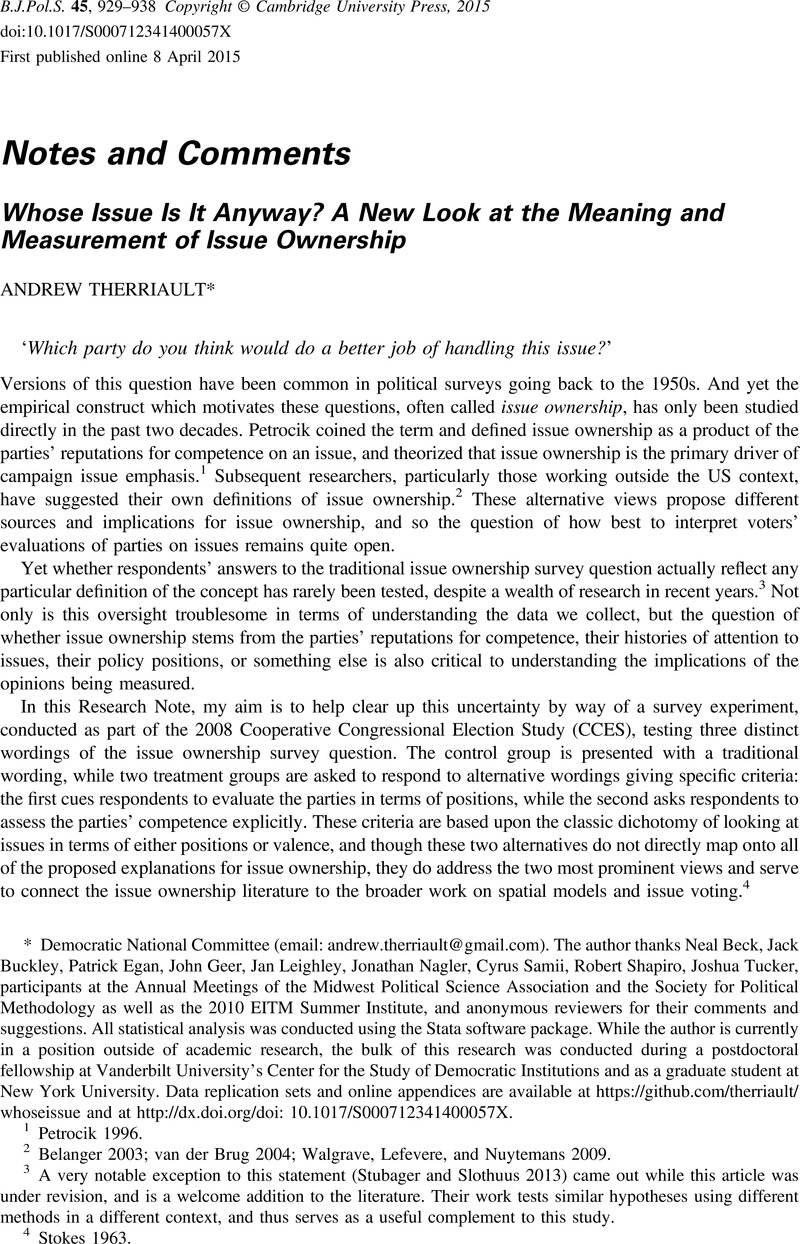Article contents
Whose Issue Is It Anyway? A New Look at the Meaning and Measurement of Issue Ownership
Published online by Cambridge University Press: 08 April 2015
Abstract

- Type
- Notes and Comments
- Information
- Copyright
- © Cambridge University Press 2015
Footnotes
Democratic National Committee (email: andrew.therriault@gmail.com). The author thanks Neal Beck, Jack Buckley, Patrick Egan, John Geer, Jan Leighley, Jonathan Nagler, Cyrus Samii, Robert Shapiro, Joshua Tucker, participants at the Annual Meetings of the Midwest Political Science Association and the Society for Political Methodology as well as the 2010 EITM Summer Institute, and anonymous reviewers for their comments and suggestions. All statistical analysis was conducted using the Stata software package. While the author is currently in a position outside of academic research, the bulk of this research was conducted during a postdoctoral fellowship at Vanderbilt University’s Center for the Study of Democratic Institutions and as a graduate student at New York University. Data replication sets and online appendices are available at https://github.com/therriault/whoseissue and at http://dx.doi.org/doi: 10.1017/S000712341400057X.
References
- 13
- Cited by




